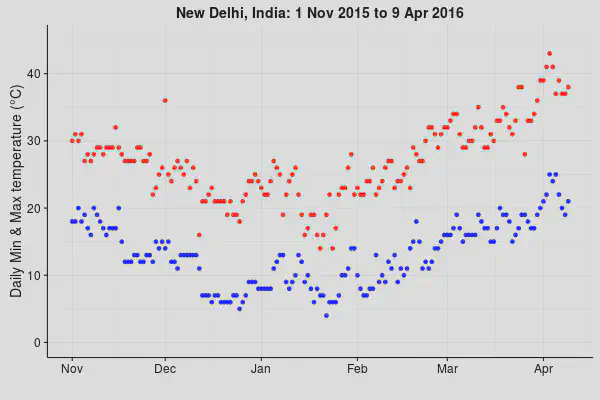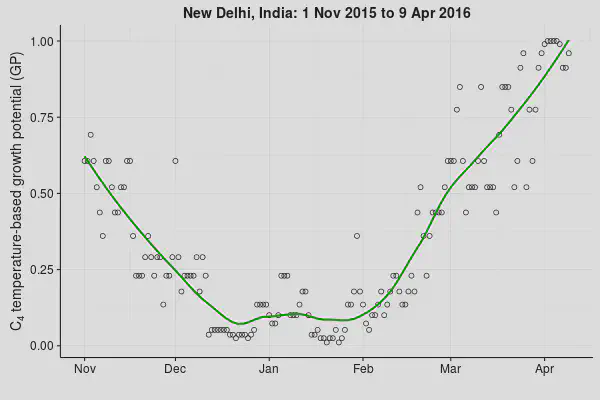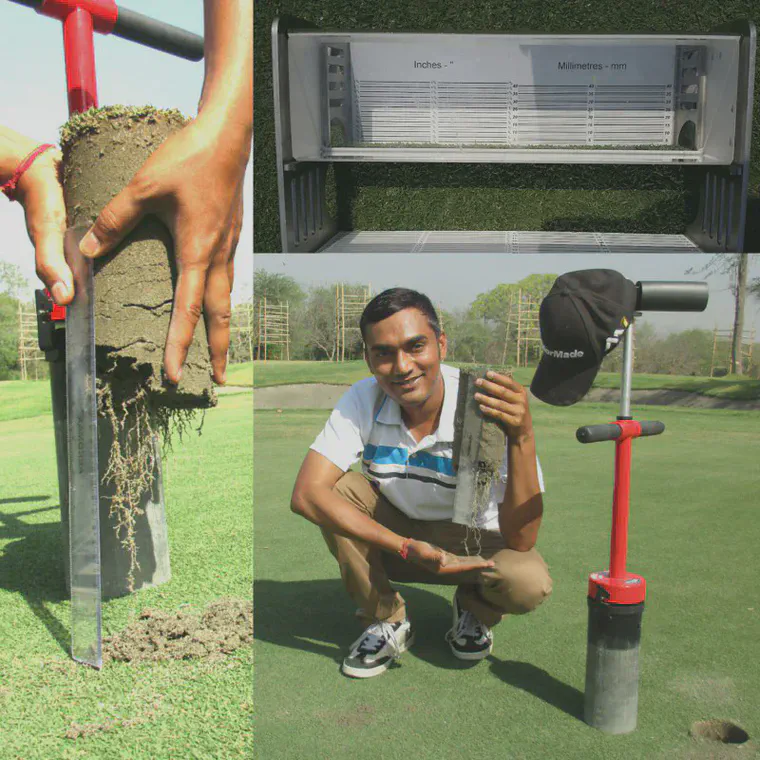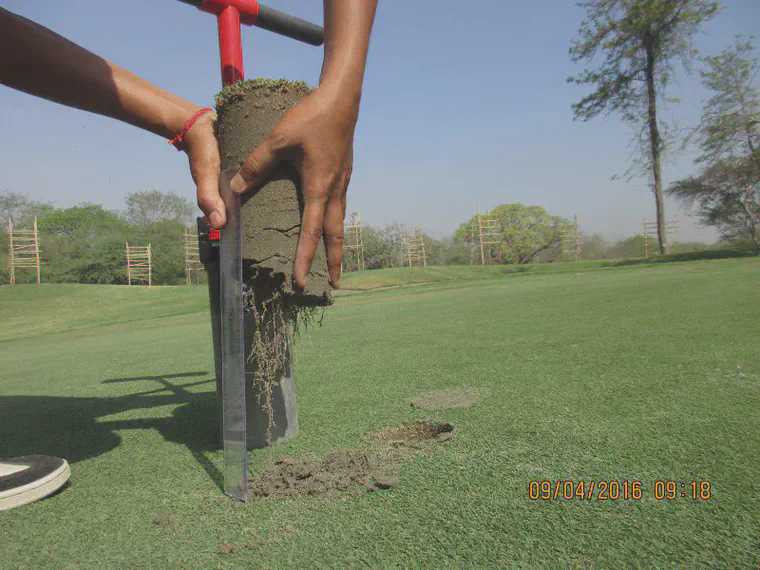Roots, growth potential, and fertilizer
Bhupendra Singh posted a photo on Instagram with this caption:
Growing roots! Tifdwarf at Peacock Course Greens, Delhi Golf Club
I wondered how the grass had been managed for the past six months.
Here’s the high and low temperatures in New Delhi from November 1 until April 9.

Those temperatures, converted to a C4 growth potential (GP), show that the GP was low in winter and approached a maximum as the temperatures warmed in the spring.

So was anything extraordinary done to develop roots like this?


Bhupendra informs me (and sent along those photos to confirm the results) that the N sources have been ammonium sulfate, urea, and potassium nitrate. The P source is single super phosphate, and the K has come from potassium nitrate and potassium sulfate.
The application rates have roughly tracked the GP.
In the winter, N was applied at an average of 0.5 g N m-2 mo-1. In February and March, as the grass came out of dormancy and the GP approached 1, the N rate has been 3 to 4 g N m-2 mo-1. The P and K are applied in proportion to the amount of N applied, in the approximate ratios used by the grass.
The mower bench setting was 4.25 mm in early April when the photo was taken, with a 3 mm prism reading on the ground.
These are new greens, planted in autumn 2015.
Even for new greens, those are still pretty impressive results. Sure, one doesn’t putt on the roots—what really matters is the surface. But these photos demonstrate that supplying the grass with the nutrients it can use, at the time when net photosynthesis is at its highest, and given water and air in the soil, roots are going to grow.